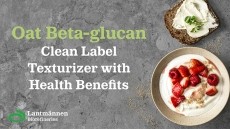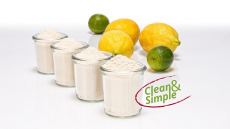New cost-effective hydrocolloid gum production method reported
proposed a simple, cost-effective method of galactomannan esters
derivatives that are "useful as functional food
ingredients."
Galactomannans, like guar gum, are commercially important for the food industry and are extensively used as stabilizers, thickeners, emulsifiers and gelling agents.
Such news may be welcomed since the cost of nearly all hydrocolloids have increased in the last year due to rocketing energy, raw material and transportation costs, according to hydrocolloid information service IMR's Quarterly Review.
Corresponding author R.N. Tharanathan told FoodNavigator.com"We did this experiment at a lab scale, hence we may not be able to comment on its cost-effectiveness at a pilot scale level. Definitely our method is cost-effective in the sense we are using less expensive food grade chemicals and their removal also seems to be much easier. Also these are ecofriendly."
The new ester derivatives, reported in the journal Food Hydrocolloids (Vol. 20, pp. 1198-1205), were produced by researchers at the Central Food Technological Research Institute in Mysore, and financially supported by Kraft Foods Global Inc.
Lead author of the study, M.R. Savitha Prashanth, reports that by esterifying galactomannans food scientists can create a new class of derivatives that can be used as emulsion stabilizers.
Traditional methods have involved reacting the polysaccharides with the respective acid anhydrides in the presence of basic catalysts such as sodium hydroxide (NaOH) at high temperatures. However, this method has considerable disadvantages such as degradation of the polysaccharide, only partial reaction, which together produce underisable functional properties.
The researchers have proposed a new method of preparation, and have applied for an Indian patent to protect the method, using anhydrous reaction conditions and relatively low temperature (4060 degrees Celsius). Solid sodium hydrogen carbonate (NaHCO3) was used as the catalyst, being a milder base than NaOH and therefore reducing any pH-induced degradation reactions.
Using this method the Indian researchers were able to prepare acetate, succinate and octenylsuccinate derivatives of galactomannans.
This whole process leads to a "simple, experimental protocol for esterification of hydrocolloid gums, avoiding strong alkali and far excess of water, thus making the entire reaction sequence including drying and final recovery steps very cost effective and economical," said Savitha Prashanth.
More information can be found in Food Hydrocolloids (Vol. 20, pp. 1198-1205), published by Elsevier.



























